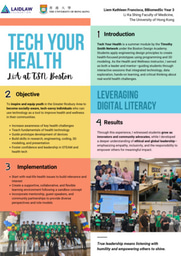Research Summary - The Future of Cancer Immunotherapy: Harnessing Next-Generation CAR-Ma through Innovative RNA Vector Multi-Modality
Abstract
This research employs and develops various genetic profiling and plasmid engineering modes to investigate the dynamic, autoimmune-related cellular interactions within the tumor microenvironment.
Introduction
At the core of this research is the goal of illuminating the relationship between the immune system and cancer progression, with the overarching aim of investigating the function and therapeutic potential of Chimeric Antigen Receptor (CAR) macrophages in cancer immunotherapy.
T cells can recognize tumor-specific antigens, making them a key target for cancer immunotherapies that aim to harness the body’s own immune system to fight cancer. Emerging CAR-macrophage therapies genetically engineer macrophages to target tumor antigens, leveraging their tumor-clearing abilities, antigen presentation, and potential to overcome immunosuppression - advantages over CAR-T approaches.
Research Overview
This research aims to synthesize a CAR-Ma product—a chimeric antigen receptor expressed on macrophages instead of T-cells—powered by the world’s first multi-modal RNA. Designed and developed by the HKU iGEM 2024 team, this multi-modal RNA is intended to perform up to three distinct functions upon activation: Replicative, Transience, and Release, in synergy with a second-generation self-replicating RNA (srRNA). Together, they offer a versatile, cost-effective, and impactful solution for targeted cancer therapies that are long-lasting, non-integrative, and controllable, while minimizing the potential risks associated with traditional approaches.
In addition to this innovative multi-modal RNA design, the study incorporates molecular targeting of immune evasion checkpoints in cancer to significantly enhance phagocytosis and improve the coordination of immune cells. It also features a fifth-generation CAR that allows for precise regulation of CAR expression through a robust genetic control system powered by a humanized nanobody.
Methodology
The methodology and protocols include the amplification of DNA fragments, followed by plasmid assembly, cloning, mini-preparation, and transformation of bacterial cultures (specifically DH5a and DH10B). Additionally, cell culturing techniques are employed for THP-a (human monocytic cell line) and HEPG2 (human liver cancer cell line) cell lines.
The simplified procedural planned overview of this research project is as follows:
- Plasmid assembly
- Linearization of plasmids
- In-vitro transcription (IVT) of DNA plasmids to RNA
- Electroporation of the RNA product into target cell lines
- Isolation of macrophage yield
Real-World Impact
Beyond the classroom, this research can significantly impact research and development initiatives, advancing fields such as genomics, biotechnology, and medicine. Furthermore, the CAR-Ma project can inspire the next generation of scientists to explore synthetic biology, viewing biological and health challenges as puzzles with solutions hidden in the complexities of our biological systems. This perspective can enhance critical thinking skills among young scientists. Additionally, CAR-Ma can contribute to the global push for innovation and entrepreneurship, paving the way for new technologies and projects with substantial potential for commercialization and widespread application.


Please sign in
If you are a registered user on Laidlaw Scholars Network, please sign in